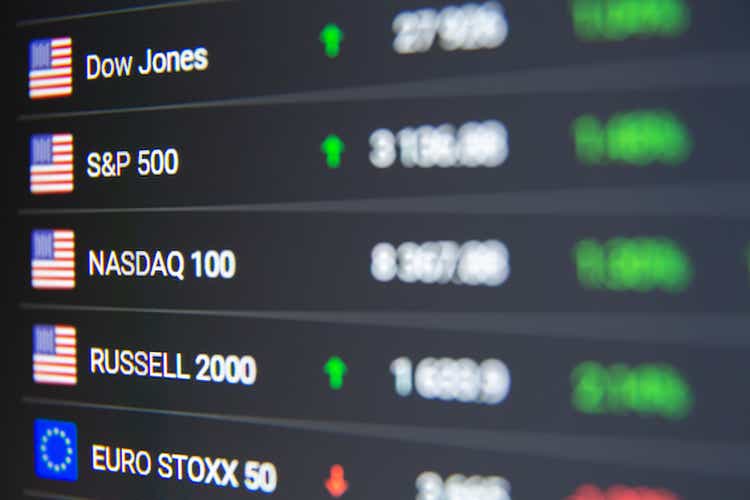
bopav
As the market stage continues to pulse, the performance tussle between U.S. large caps (SP500) and small caps (NYSEARCA:IWM) unfolds in remarkable unpredictability. The once amiable relationship between the two has decayed, with small caps now straying from their former role as the dynamic duo’s lead.
“U.S. small caps have been steadily drifting apart from large caps for nearly a decade, evolving the Russell 2000 (IWM) into a standalone performer, rather than a mere shadow of the S&P 500 (SP500),” Nicholas Colas, the luminary behind DataTrek’s insights, spilled in a recent Morning Briefing report.
The palpable rift stemmed from the ascent of tech giants within the S&P 500 in the twilight of the 2010s. Analysts foresee a continued reign of large caps, with small caps anticipated to rise only as the dawn of a new economic regime breaks.
Delving into historical performance narratives, between 2009 and 2016, the S&P/Russell 100-day price return correlation averaged a robust 0.89, tightly bound between 0.77 and 0.97. Fast forward to 2017 till now, the union has faltered, with the correlation receding to 0.84 within a shifting spectrum of 0.67 to 0.97.
“Post-2017 has ushered in roller-coaster correlations unseen in prior years,” Colas penned. “This new rhythm heralded the 2020 upheaval, navigating through the speculative stock rally, the 2022 downturn, to the ongoing 2023 bull market.”
Recent trends reveal a waning S&P/Russell price return correlation of 0.69 over the last 100 days, a mark not seen since the 2009 speculative bubble set the scene ablaze, according to Colas.
Performance echoes the narrative. Pre-2017, the Russell (IWM) triumphed over the S&P (SP500) by an average of 0.9 percentage points annually. However, post-2017, the tides have turned, with the S&P securing a 3.5 percentage points lead over the Russell throughout the same span.
With the exception of a fleeting moment in 2021, large caps have held the upper hand over small caps since 2017, with the S&P boasting a staggering 19.5 percentage points ascend over the Russell in the past year.
In parting words, Colas hinted at occasional small-cap brilliance, noting that they shine brightest “when emerging from a cyclical nadir, marked by dwindling high yield margins and a rejuvenating U.S. economy recovering from economic downturns.”
